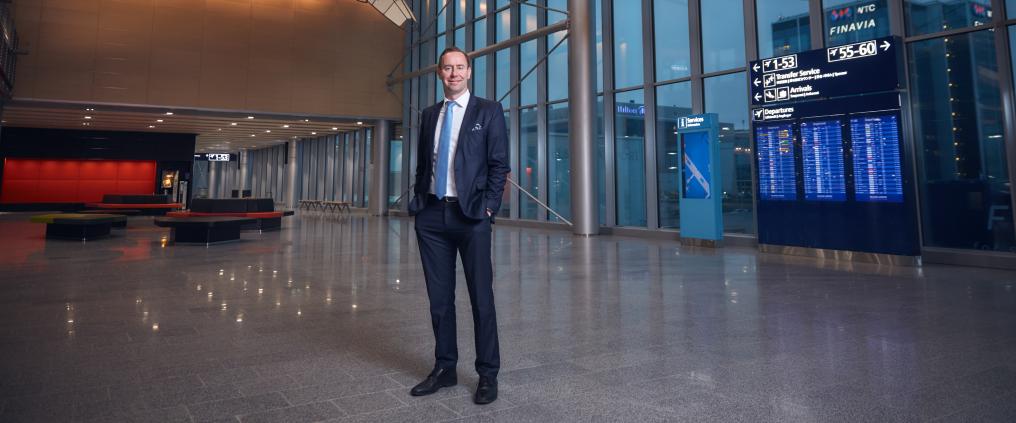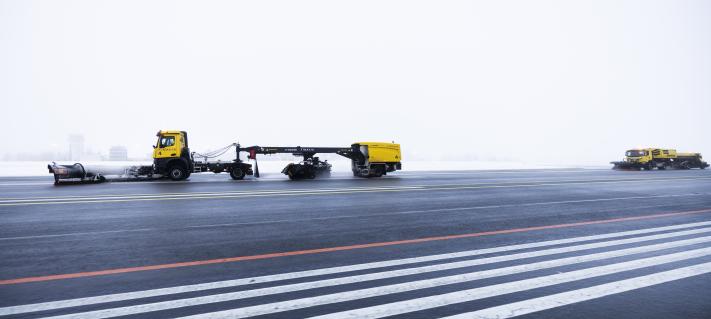In April 2018, Sweden launched a flight tax that every passenger must pay as part of their flight ticket. In December, however, the country reversed the decision: the collection of flight taxes will end in July this year.
This Swedish example shows that, instead of thinking about flight taxes, we should look at how air travel as a whole can become more responsible.
Climate change is a global threat that requires changes in all human activities, including aviation, an industry that covers 2–3% of global greenhouse gas emissions.
Here, the focus should be on international solutions that have a significant impact on the emissions of the whole industry.
On shorter routes, it is reasonable to replace flying
The environmental efficiency of flying has increased significantly in the 21st century. The newest fleets are constantly more efficient than their predecessors. Currently, the average fuel consumption per air passenger is 3 litres per 100 kilometres – less than the average car passenger.
In the coming years, fuel consumption will become even more efficient, and, in the coming decades, hybrid aircrafts and even electric aircrafts will be an option for shorter routes.
Before these advancements in technology become a reality, compensating flight emissions needs to intensify, and the use of renewable fuels needs to be advanced.
Where reasonably possible, air travel can be replaced with rail travelling. Where flying is the only option, emissions should be cut down and compensated.
Finland is a land of long distances, but even here, there are alternatives to flying on shorter routes. If the country’s main train line would run through Helsinki Airport, it would be easier to access the airport from Central Finland by train. This way, the connections of an international hub airport would be more accessible to the businesses and people living in various Finnish regions.
Great air connections are essential for Finland
Finnish companies benefit greatly from the fact that Helsinki Airport has become an international air hub.
From the perspective of Central Europe, Finland is like an island that is only easily accessible by air. A journey that could take a week by boat could take just a day by plane – and only by plane.
In many other countries – even in Sweden – the situation is not as critical when it comes to the necessity of flying. The Öresund Bridge connects Sweden to Central Europe and provides a direct rail connection to Copenhagen Airport.
That Sweden has decided to cancel its flight tax should encourage us to focus on existing international mechanisms instead of constructing new national ones.
Even from an environmental perspective, a flight tax only implemented in Finland would have minimal or even negative overall effects. The shortest route between Europe and Asia is via Helsinki Airport. Finnish airspace is not relatively busy, so aircraft can land using the continuous descent approach, thereby creating less greenhouse emissions. A flight tax in Finland would direct connecting flights between Europe and Asia to longer routes and to airports and airlines that are less environmentally efficient.
The airline industry is already showing a global example
The aviation sector has already been included in the European Union Emissions Trading System for seven years, since 2012. The system works, though the price mechanisms of emission rights and its market dynamics can still be further improved.
The implementation of CORSIA, the emission mitigation approach for the global airline industry, will start in 2021. In CORSIA, countries and airlines have pledged to compensate emissions caused by aviation and will purchase emissions rights for emissions exceeding 2020 levels. The long-term goal is to halve carbon emissions by 2050. With such a radical solution, the airline industry has provided a unique example of proactively taking responsibility of the situation.
It sets an example for other industries as well: this is how challenges presented by climate change can be dealt with together, without taxation settlements that would negatively affect the sensitive dynamics of the industry.
The discussion on aviation emissions is most efficient in international arenas. If new mechanisms are to be enforced, they should encourage operators who are responsible and environmentally effective. Mechanisms that help to eliminate environmentally inefficient solutions from the market are also possibly needed.
Similar solutions are equally necessary in other industries – the ones responsible for the other 97–98% of global greenhouse emissions.
Both airline companies and airport operators have actively improved their operations in order to become more responsible. Helsinki Airport, operated by Finavia, is already carbon neutral. In 2020, all airports operated by Finavia will be carbon neutral. Climate responsibility is part of everything that we do, and it can be seen in our use of solar energy, renewable diesel made of waste and residues, wind power, geothermal energy and LED lights, for example. Our new construction projects are carried out in an environmentally efficient way and the CO2 footprints of our business travels are compensated.
Watch a video about Finavia’s corporate responsibility – the Sum of Good things.




